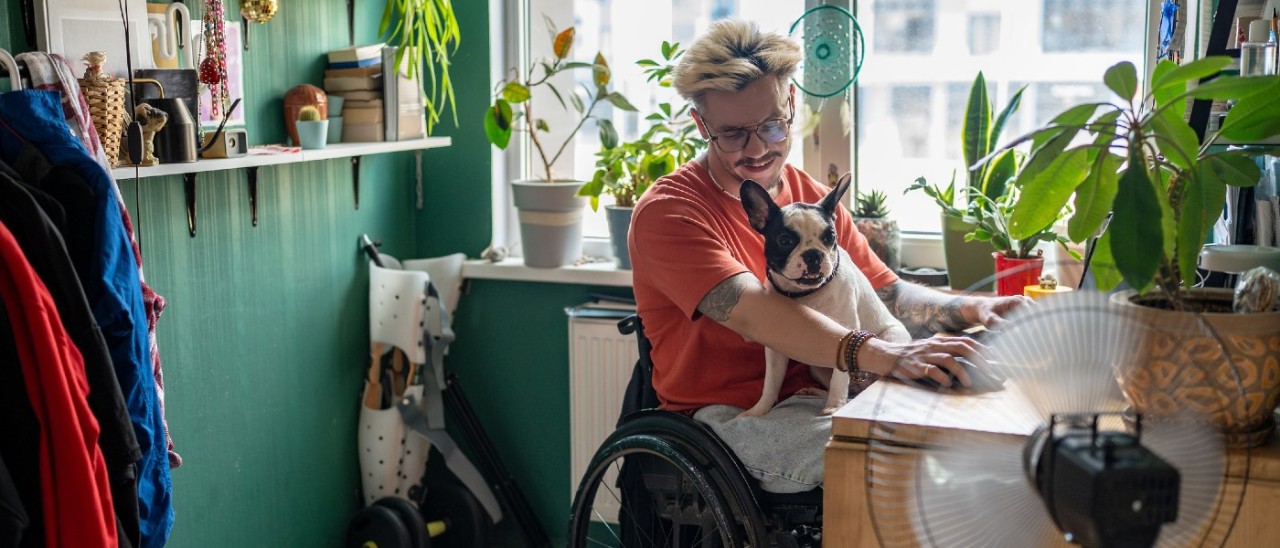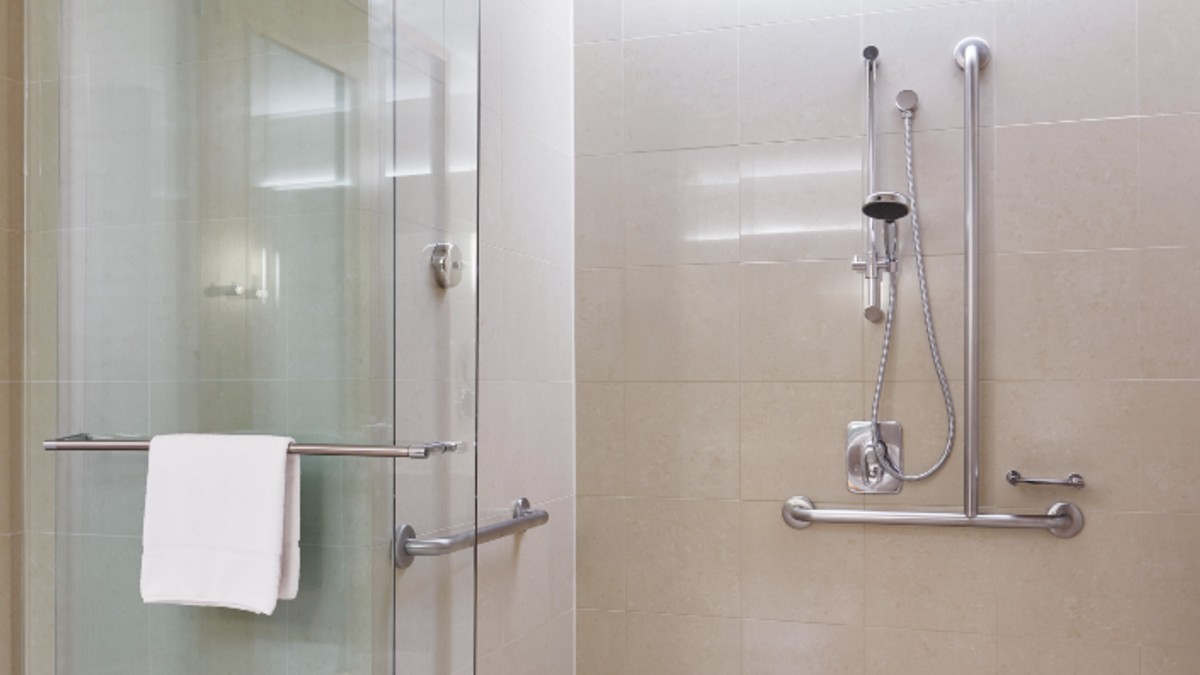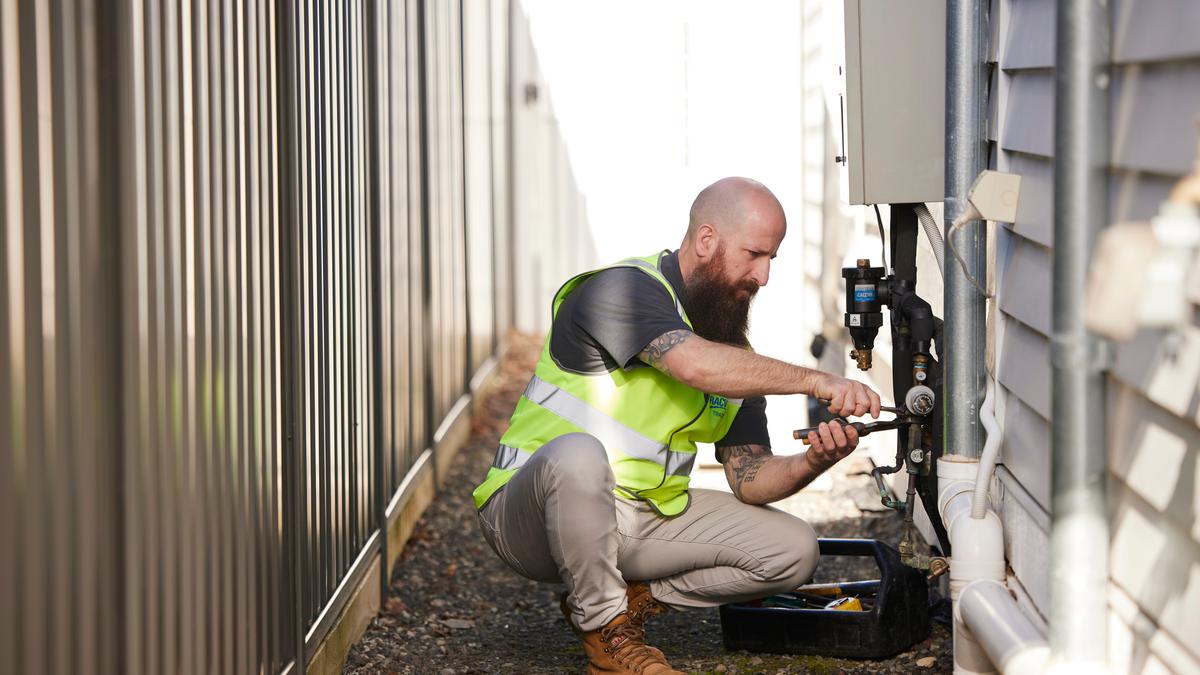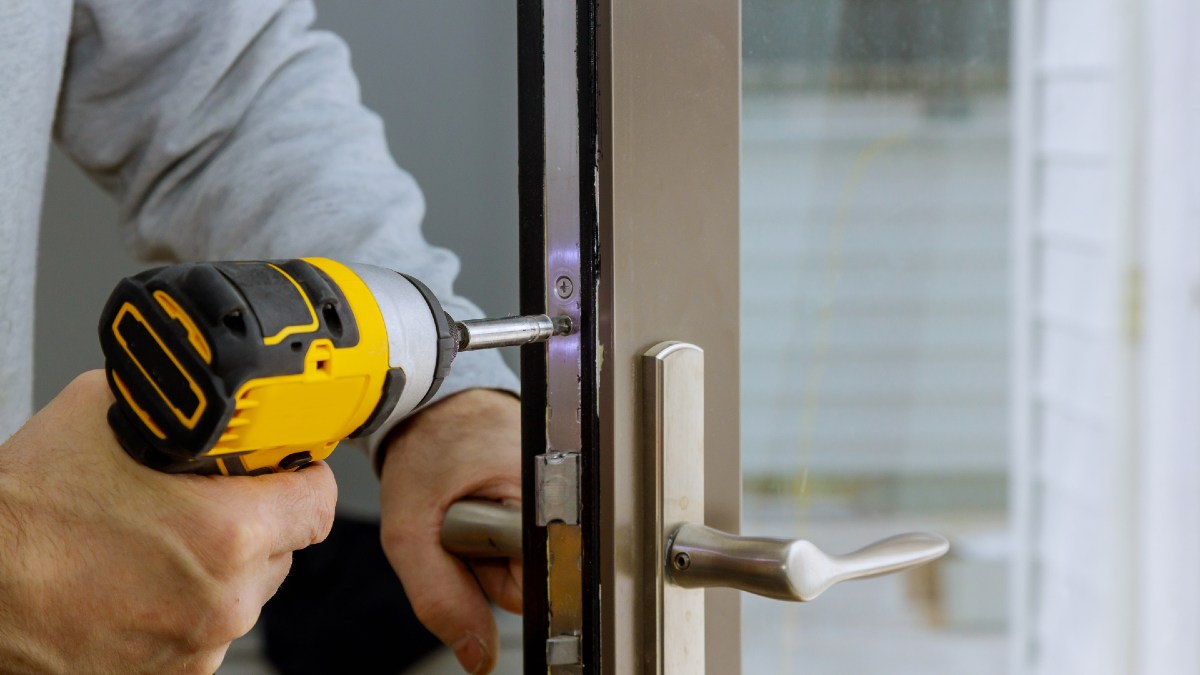Finding inexpensive home furniture isn’t as hard as you might think. Here are some ways to furnish your new home on a budget.
How to create a safe and accessible home environment

Improving the accessibility of your home isn’t as hard as you might think. Follow these simple steps to make your place more welcoming for everyone.
With around one in five Australians living with a disability, according to the Australian Bureau of Statistics, it’s important that our homes can accommodate our diverse accessibility needs.
While most Australian states and territories have implemented mandatory buildings requirements to improve accessibility in homes and public spaces, there are still more measures that individuals can take to make their homes more welcoming for people of all abilities.
While this article focuses primarily on mobility access, it’s important to note that there are a wide range of accessibility needs and modifications that can be made to your home. It's also possible to buy a yearly subscription for emergency wheelchair and scooter assist, in case your wheelchair or mobility scooter has a flat tyre or requires minor repairs.
More home safety and accessibility guides
Are there mandatory building standards for accessibility in Australia?
The National Construction Code (NCC) Livable Housing Design Standards have been mandatory in Victoria since May 1, 2024. These design standards exist to improve the accessibility of housing to those with reduced mobility.
Accessibility measures included in the Livable Housing Design Standards include:
- At least one step-free entry
- At least one step-free entry to a bathroom and shower
- An accessible toilet
- Reinforced bathroom and toilet walls to allow for handrails
- Wider internal doors and corridors
These measures apply to new and existing class 1a (detached residential buildings or horizontally attached residential buildings – for example, townhouses or terraces) or class 2 (apartment) buildings.
Renovating an existing property may require the building to be brought into line with the Livable Housing Design Standards, depending on the extent of the proposed alterations.
Identify what accessible alterations your home needs
The set-up and layout of your home will guide what modifications your home needs to improve its accessibility, as will your or your household’s individual accessibility requirements.
Some household features that can present accessibility challenges can include:
- Stairs and steps
- Loose or uneven flooring, worn carpet, and rugs
- Bathrooms, toilets, and laundries
- Kitchens
- Narrow doorways and corridors
- Cluttered spaces
- Poorly lit areas
An occupational therapist can also help identify the accessibility modifications that could be beneficial for you.
Accessible home modifications and adaptations
Ramps
Ramps are an effective way to improve a building’s accessibility for homes that have a raised entrance. They make it easier for people with reduced mobility or using mobility aids (such as wheelchairs or canes) as well as small children to enter your home.
Ramps can be made of a variety of materials. Timber and concrete ramps are best if you want a permanent accessibility solution, while modular aluminum ramps can be installed if you want the ability to easily remove the ramp in the future.
Grab rails
Grab rails improve accessibility and safety around baths, showers, and toilets by providing a secure, easy-to-hold support to reduce the risk of slips and falls.
Grab rails are a simple and budget-friendly modification you can make to your home that can help people with reduced mobility live independently. You can buy grab rails from most hardware stores in a variety of sizes and styles and installation can be done by either a confident home handyperson or a professional tradesperson.

Bathrooms can benefit from a range of accessibility modifications, including walk-in showers and grab rails.
Walk-in showers
Plumbing fixtures that require a person to ‘step-in’ to use them can present challenges to anyone with reduced mobility.
With a walk-in shower, the shower floor is flush with the bathroom floor, meaning a person can simply walk into the shower without having to step up and down. If you’re planning a bathroom renovation, a curbless or floor-level shower is a sleek, easy-to-clean accessibility modification to consider.
Accessible tapware and showerheads
Taps that you have to screw to turn on or off water can be difficult for people with reduced mobility.
Choosing tapware with mixer-style handles that can be moved instead of screwed is a more accessible option. This style of tapware can be used for both sinks, baths, and showers, with extended handles and an option for extra accessibility.
Changing the type of shower you have can also improve accessibility in the home, with hand showers and rail showers typically easier to use than traditional wall-mounted, static showerheads.
Hand showers
Consider a removable, hand-held showerhead that is attached to a singular bracket on the shower wall to increase accessibility. Showerheads can be purchased with multiple spray functions.
Rail showers
Similar to hand showers, rail showers also allow the removable hand-held showerhead to be fixed to an adjustable bracket. This allows you to set the ideal height and angle for the water without the need to hold the showerhead while showering, while still having the choice of using it as a hand shower.

Tempering valves are a small but important measure that can help prevent scalds in your household.
Tempering valves
Tempering valves ensure that the water that comes out of your taps, shower and baths never exceeds 50°C.
These valves are an important safety feature, but older homes with hot water systems installed before 1998 often do not have them installed. This can present a scald risk to everyone in your household, and especially those with reduced mobility or increased accessibility needs.
Contact a licensed plumber to have your hot water system checked for a tempering valve.
Safe and efficient heating and cooling
Older homes commonly feature single-room gas heaters which are less safe, less accessible (they generally don’t have remote control), and less efficient than more modern climate control systems.
Consider replacing gas heaters with reverse-cycle split systems. These systems allow you to heat and cool your house, are safer and more energy efficient than gas heaters. Plus, several discounts exist to help households transition to these appliances.
Accessible door handles and locks
As with taps, door handles that require turning to open are less accessible than lever-style handles.
Lever-style handles can be bought from hardware stores in a variety of styles and can even be fitted with locks. For maximum accessibility, these handles should be located one metre from the base of the door and measure 72mm from the keyway to handle.
Smart locks, including smartphone, biometric and touchscreen locks, are another way to increase accessibility. As they don’t require keys, these locks can make it easier if your mobility is limited.

Lever-style door handles can be easier to operate than knobs that require turning your wrist. Image: Getty.
Improve lighting
Having a well-lit home means it’s easier to see and detect trip hazards before they cause harm. Having good lighting in your home is also important as we age, as eyesight can naturally decline and make it hard to move around, read labels, and find important items.
Opt for LED light bulbs where possible. Not only are these the most cost-effective lights to run, but they also last the longest, reducing the need to get on a ladder to change them. Some LED lights can be installed by yourself, but others will require a qualified electrician.
Also consider your light switches and where they’re located: voice-activated lights or those that can be switched on via a remote or smartphone app can be more accessible for those with reduced mobility.
Use non-slip mats
Using non-slip mats is one of the easiest and most cost-effective ways to improve the safety of your home for anyone with mobility challenges.
Non-slip mats can be bought from many retailers and come in a range of shapes and sizes to fit almost any space in your home.
Key areas that may benefit from non-slip mats include bathrooms (especially in showers or baths), kitchens and laundries. Non-slip tape or stair nosing can also be applied to stairs to improve accessibility and overall safety.
Do I need a tradesperson to install accessibility modifications in my home?
Some home accessibility modifications, such as using anti-slip mats or changing door handles, are relatively simple DIY tasks. However, any modification that includes plumbing or electrical work should only be done by a licensed professional.
It’s also important not to undertake any home modifications that you're not confident in, including any task that requires you to work at height or on a ladder.
Are there any grants or rebates available to improve accessibility in Australian homes?
The National Disability Insurance Scheme (NDIS) provides funding directly to individuals living with a disability so that they can access the supports they need.
The funding is designed to improve independence, quality of life and access to social, employment and educational opportunities. Support through the NDIS is tailored to each individual, with home modifications just one type of support that can be funded through the program.
Typically, an occupational therapist is enlisted to assess the types of home modifications you, your family member or friend may need to improve safety and quality of life.
Visit the NDIS website to find out more.
RACV Trades is a trading name of RACV's trade partner, Club Home Response Pty Ltd (Victorian registered domestic building practitioner number CDB-U 100178). All works are performed or arranged by Club Home Response Pty Ltd. trading as RACV Trades. Read the RACV Trades Terms and Conditions.


